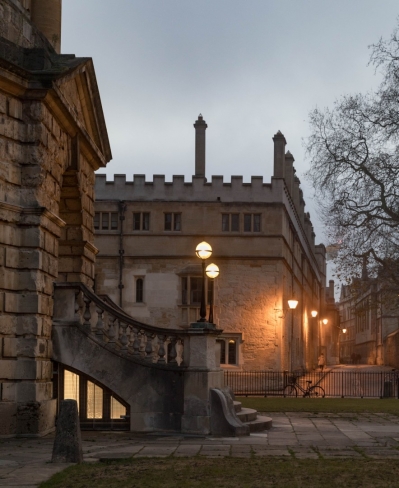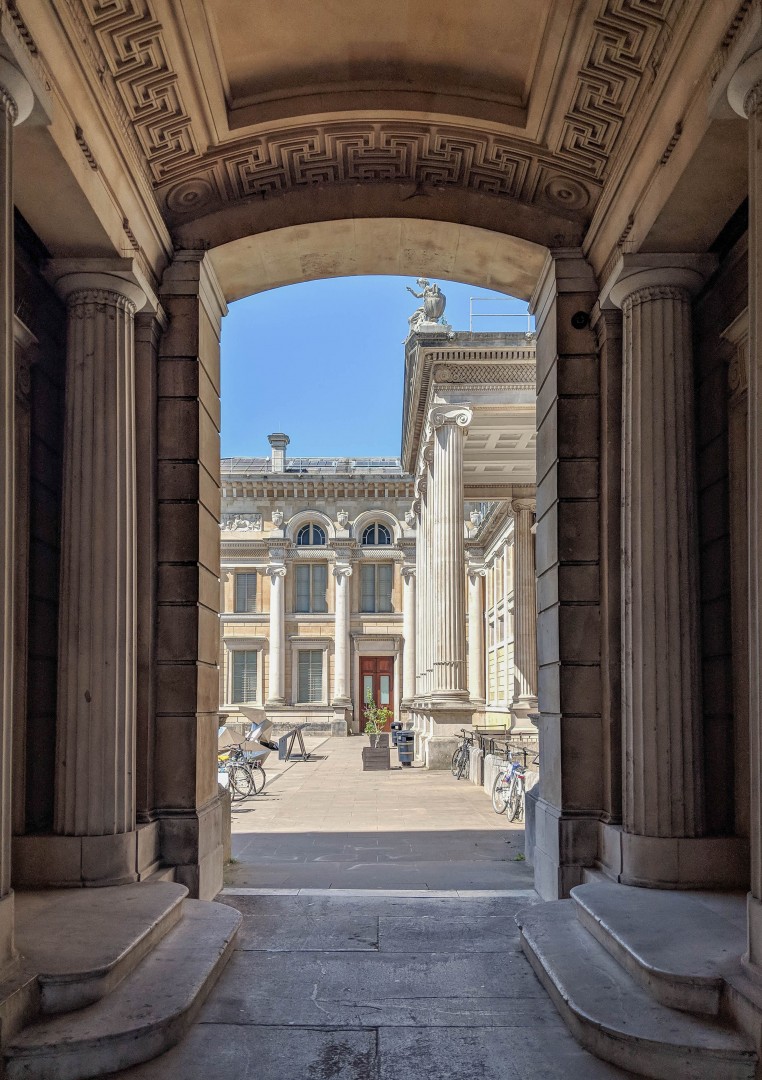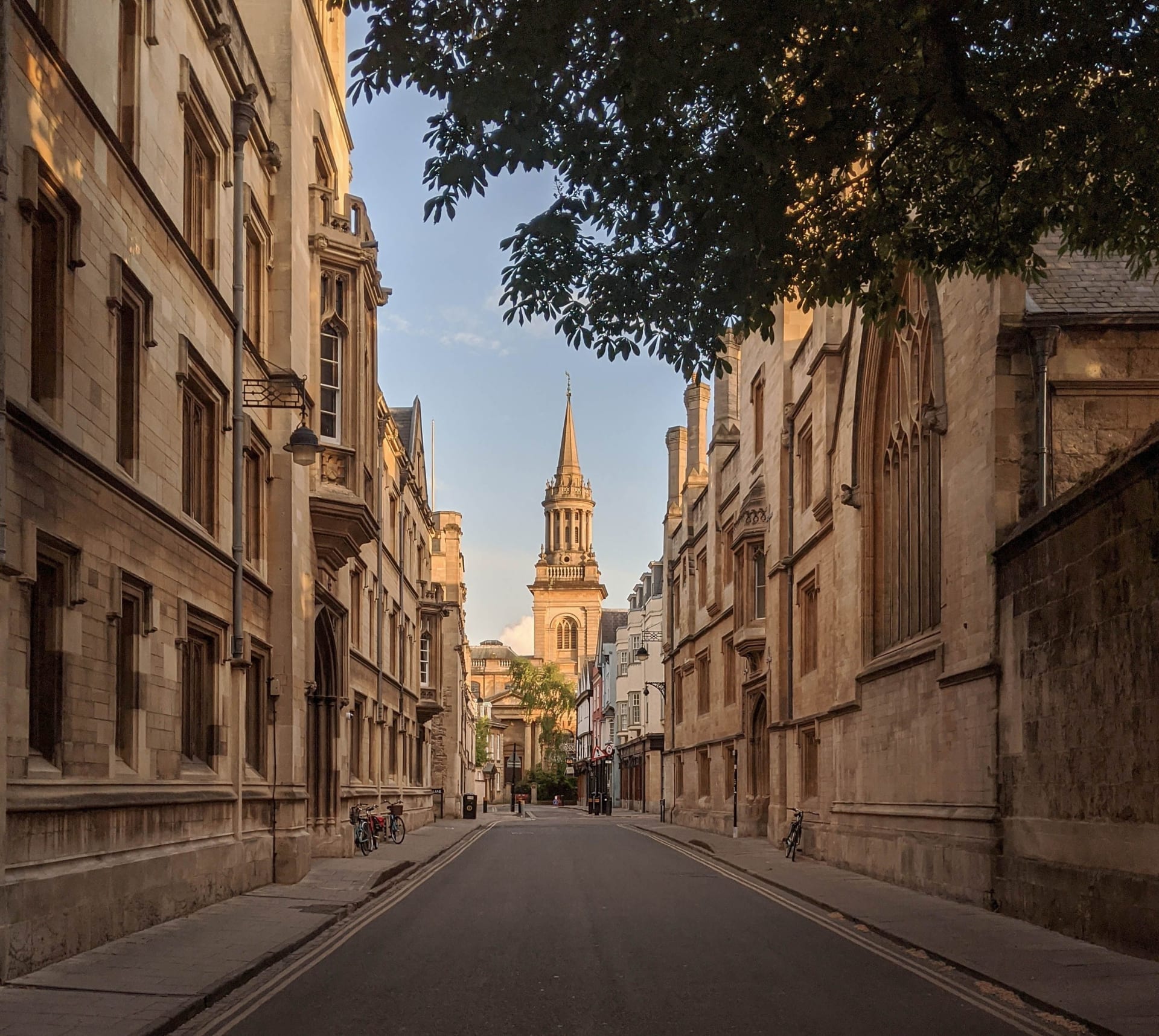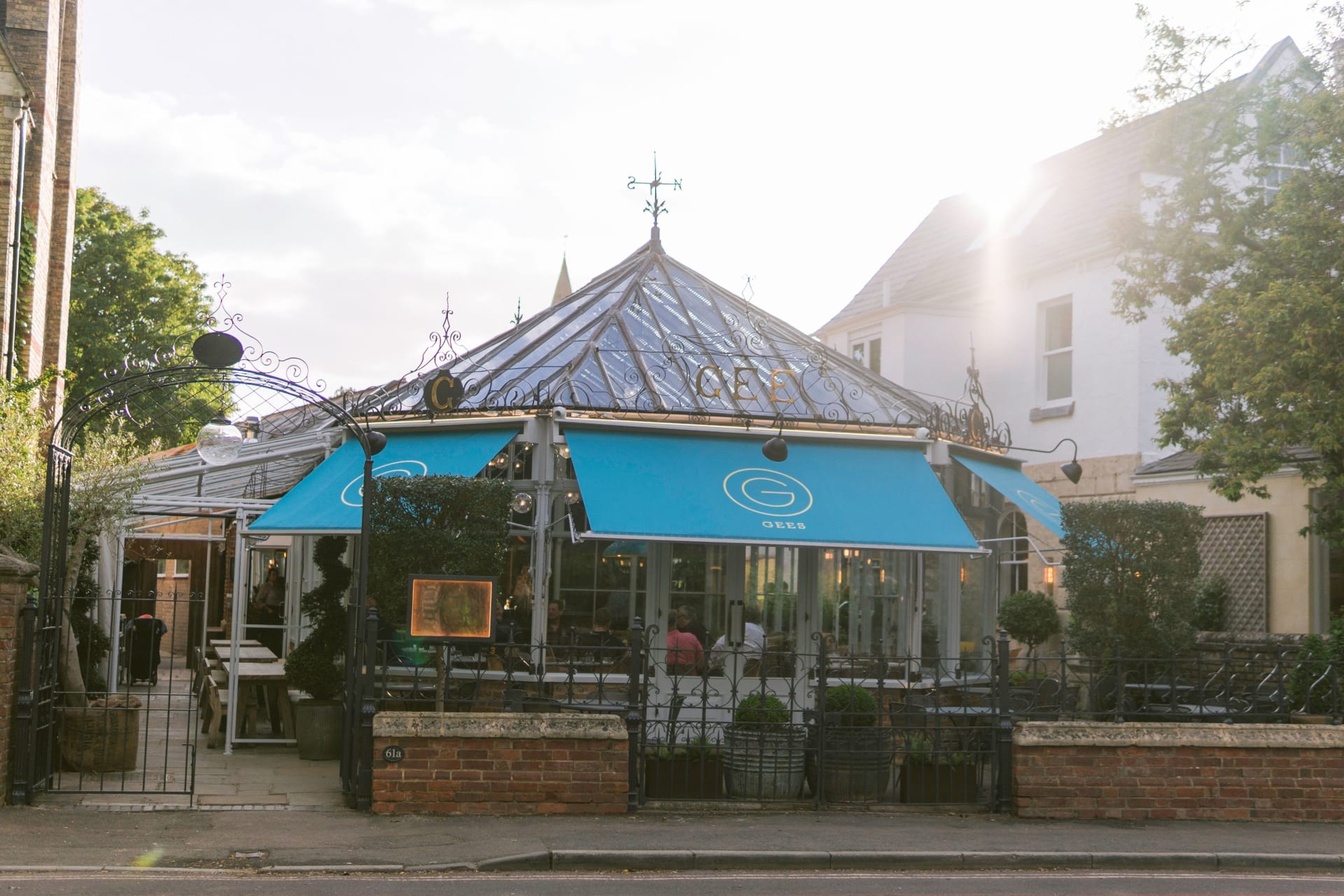Oxfordshire is a wonderful place to live and work for anyone who has an interest in history and the heritage of our built environment. From the grinning Oxford grotesques keeping watch in the city centre, to the rubble stone cottages in the villages, the county is a treasure trove of fascinating buildings which convey a sense of uniqueness helping us to understand our past and connecting us to our communal identity.
 There is pleasure in being able to tread the same path as our ancestors, to imagine what their lives might have been like and how that might inform us today. I have been privileged in my career as an architect to experience the city from several vantage points; from the roof of the Bodleian inspecting the graffiti left by lead workers several hundred years ago, to the depths of the wine cellars at Christ Church, threading through the darkened stone vaults. In the course of our work on site, at Perioli Man we’ve uncovered long buried bones (thankfully not human) and forgotten wells, as well as many artefacts from previous lives – prosthetic limb anyone? There is something thrilling about being in a building that so many previous generations have inhabited and changed in their own ways…as though their stories have seeped into the walls. I never tire of it.
There is pleasure in being able to tread the same path as our ancestors, to imagine what their lives might have been like and how that might inform us today. I have been privileged in my career as an architect to experience the city from several vantage points; from the roof of the Bodleian inspecting the graffiti left by lead workers several hundred years ago, to the depths of the wine cellars at Christ Church, threading through the darkened stone vaults. In the course of our work on site, at Perioli Man we’ve uncovered long buried bones (thankfully not human) and forgotten wells, as well as many artefacts from previous lives – prosthetic limb anyone? There is something thrilling about being in a building that so many previous generations have inhabited and changed in their own ways…as though their stories have seeped into the walls. I never tire of it.
The character of both the city and the county is varied and evolving; areas of special architectural or historic interest are protected by designated conservation areas, of which there are currently 18 in Oxford City alone, and many more across the county. The preservation of these historic areas is essential but there is a certain tension between keeping them exactly as they are (or were, when first built) and allowing them to evolve and change, reflecting social and cultural shifts in the city.
We live in a time of enormous global upheaval, where challenges such as lack of affordable housing and climate change are essential considerations when designing new structures; but what of the buildings we already have? Should we be protecting our historic built environment by refusing all new development? Does looking to the future potentially damage our precious heritage? Currently, there is a perception that legislation governing building conservation could limit the opportunities to increase energy efficiency in historic buildings, provide electric car charging points or design contemporary solutions to the way in which we live and work today, all while using building stock that is now several hundred years old.
 One issue, which is very much alive – and fiercely debated – is that so much of the character of an area or a building is subjective, and people have differing values relating to spaces and appearance. Some feel the best way to protect our heritage is to do nothing at all; to stop time at a particular point and preserve everything in aspic from that point on. It’s my view that the best way to protect our heritage is for buildings to be allowed to evolve and change, for the original building to retain its special character but with newer interventions which are demonstrably of their own time – not a pastiche or imitation. This allows the story of the building and its evolution to be read, both now and in the future. Often contemporary interventions in historic fabric work brilliantly as a counterpoint to the original and sometimes, they borrow and reimagine the existing historic motifs in a modern form, which can look fantastic. There are some good examples of this in Oxford, but they are more often a statement building, like the glazed infill extension to the Ashmolean by Rick Mather, or the high shine glass and metal extension at St Antony’s College by Zaha Hadid, rather than interventions on a smaller scale (with a few notable exceptions, of course). It seems incongruous to me to extend a Victorian house in a pseudo-Victorian style – certainly clues can be taken from the host building in terms of proportion or materials, but the extensions are new and created to support modern lifestyles that are different from those of a century ago. Therefore, I believe they should reflect this alongside the unique features of the historic original, so that both can be read in tandem. Care naturally must be taken when applying innovative, contemporary measures to ensure they complement and enhance the life of the building rather than harm it, but a more forward-looking approach to conservation and heritage and its role in a contemporary landscape is overdue.
One issue, which is very much alive – and fiercely debated – is that so much of the character of an area or a building is subjective, and people have differing values relating to spaces and appearance. Some feel the best way to protect our heritage is to do nothing at all; to stop time at a particular point and preserve everything in aspic from that point on. It’s my view that the best way to protect our heritage is for buildings to be allowed to evolve and change, for the original building to retain its special character but with newer interventions which are demonstrably of their own time – not a pastiche or imitation. This allows the story of the building and its evolution to be read, both now and in the future. Often contemporary interventions in historic fabric work brilliantly as a counterpoint to the original and sometimes, they borrow and reimagine the existing historic motifs in a modern form, which can look fantastic. There are some good examples of this in Oxford, but they are more often a statement building, like the glazed infill extension to the Ashmolean by Rick Mather, or the high shine glass and metal extension at St Antony’s College by Zaha Hadid, rather than interventions on a smaller scale (with a few notable exceptions, of course). It seems incongruous to me to extend a Victorian house in a pseudo-Victorian style – certainly clues can be taken from the host building in terms of proportion or materials, but the extensions are new and created to support modern lifestyles that are different from those of a century ago. Therefore, I believe they should reflect this alongside the unique features of the historic original, so that both can be read in tandem. Care naturally must be taken when applying innovative, contemporary measures to ensure they complement and enhance the life of the building rather than harm it, but a more forward-looking approach to conservation and heritage and its role in a contemporary landscape is overdue.
The onus is on us as designers, to be innovative and sensitive; for clients to be adventurous and bold; and for local authorities to be supportive and forward looking. That way we can ensure that not only does our built heritage survive and continue to be valued, but that our cities and towns thrive in the future.
RIBA chartered Perioli Man Architects are an Oxford-based practice, committed to producing high quality, creative design solutions. Founded in 2005 by joint directors Thomas Man and Sarah Perioli, who each gained considerable experience through working for notable practices both in the UK and South Africa. In addition to their expertise in altering existing historic buildings, they work on residential, education and commercial projects.
They either a full or partial service, from inception to completion, tailored to each project and work closely with a number of established professionals including structural engineers, quantity surveyors, project managers, sustainability consultants and planning consultants.
For enquiries or further information visit perioliman.com
With thanks to Vic Crofts for allowing us to use her beautiful images. Find her on Instagram @hubble15









